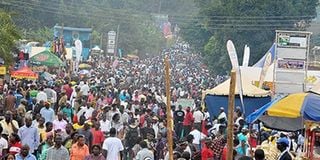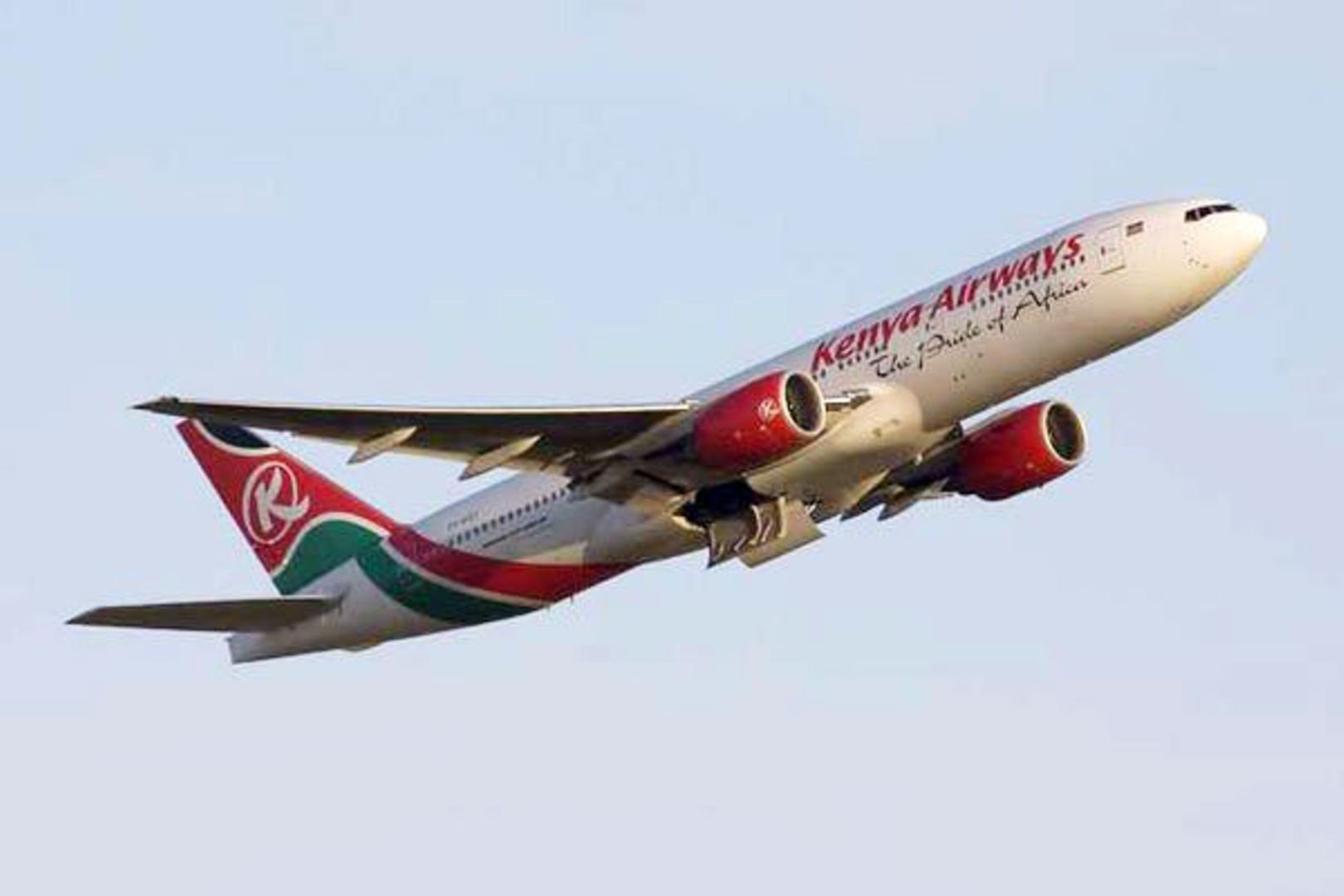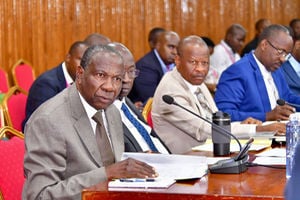Retracing footsteps of Catholic missionaries

Pilgrims at the Namugongo Catholic Shrines at one of the annual Martyrs Day celebrations. File photo
What you need to know:
This year, the Catholic Church in Uganda celebrated 136 years of existence. There are many accounts of how this Christian faith found its way into the country.
On February 17, leaders and laity of the Catholic Church in Uganda congregated at Kigungu in Entebbe, Wakiso District, to commemorate 136 years since Catholic missionaries arrived in Buganda Kingdom.
The White Fathers missionaries comprising Fr Simon Lourdel and Brother Delman Amans docked at Kigungu following the journey from Tabora mission station through Lake Victoria.
They sought to meet Kabaka of Buganda, Muteesa I, to seek his permission to convert Baganda from paganism to Christianity.
Uganda was unborn
In his book The Evangelization of Uganda, Challenges and Strategies 2003, Fr Frederick Tusingire states that the February 24, 1878 papal decree entrusted the White Fathers with evangelising in the Victoria Nyanza Mission.
Fr Lourdel and Br Amans were two of the five Cardinal Charles Lavigerie, the Archbishop of Algiers and the Apostolic Delegate for the Sahara and Sudan, dispatched to Victoria Nyanza Mission.
The other missionaries were Livinhac, Girault and Barbot.
“The rest joined them on 25 June 1879 and thus the remarkable work of planting and nurturing the Catholic Church in Uganda started,” Tusingire, notes.
Lavigerie is credited with founding the White Fathers, now referred to as the Missionaries of Africa, in 1867.
According to Tusingire, two years earlier, Lavigerie had met Daniel Comboni in Paris where the latter shared his ‘plan for the regeneration of Africa’.
Lavigerie, like many Europeans then, believed that European Christians, and particularly French civilisation, was superior to that of other continents and religions.
“He was convinced Christianity had duty to bring civilisation to the pagan world of Africa. The Africans had to be evangelised in order to be saved from the fire of Hell,” Fr Tusingire writes.
When he got to Buganda, Lourdel wrote a letter to Alexander Mackay, one of the Protestant missionaries in Buganda.
He requested Mackay to help the White Fathers get audience with Kabaka Muteesa.
However, Mackay, aware of the White Fathers’ French roots, told the Kabaka the ‘French do not like kings at all’ and that they had even killed all their kings many years ago.
Mackay added that Catholics demand obedience to the Pope, their spiritual head.
He made these statements to discourage the Kabaka from meeting the Catholics whom Mackay saw as rivals of the Protestants.
The Kabaka consulted
The person he turned to was Toli who was teaching the Kabaka Arabic.
Toli had accompanied the Sultan of Zanzibar to France. So, Muteesa thought him competent to advise about French missionaries.
Toli advised the Kabaka to ignore Mackay. And the Kabaka did.
The Mackay group then turned to blackmail; they told the Kabaka that if he did not send Catholics out of Buganda, Britain would stop protecting him from his northern enemies.
Tusingire notes, “This was counterproductive for the Protestant[s]. It in fact caused the king to doubt their reliability and pushed him to befriend the Catholics.”
It was a godsend to the Catholics
As the book points out, Lavigerie had earlier told the pioneer White Fathers to always aim at winning over the local leaders.
“Much depends upon gaining the goodwill of the native princes…if only one chief is brought over to the side of the Christians, more good results will accrue to the mission than if a hundred ordinary natives had been converted.”
In case, they couldn’t win over the king, they were to target the king’s mother since any influence on either of the two ‘was bound to influence the subjects’.
But even before the Protestant-Catholic wars, the Muslims, who were in Buganda earlier than the Christians, went to war with the Catholics.
The Muslims, who had for long focused on getting slaves to sell to Arab traders, now realised the Catholics, who were against slave trade, were winning over converts.
Two years later, the Muslims fought, and defeated, the Catholics, forcing them to flee from the king’s court to elsewhere.
In 1890, the Protestants and the Catholics united to fight the Muslims, and defeated them.
With the Muslims defeated, the Protestants turned their attention and guns on the Catholics.
In 1892, war broke out
The Protestants’ firepower eventually won them the day, and occasioned the flight of Catholics, many to Buddu.
The French White Fathers then requested the British Mill Hill Missionaries to evangelise the British protectorate.
According to Kevin Ward’s A History of Christianity in Uganda, the Catholics decided to eschew politics to concentrate on their religious tasks. “This allowed them to evangelise freely throughout the country, whatever the denomination of the local ruler or chief,” Ward notes.
To “soften” the natives, the missionaries taught them how to read and write and provided health services.
“Western education and culture quickly made their presence felt, making it easier for Ugandans to embrace certain aspects of the Christians teaching,” Tusingire notes.
Once a Christian community was nurtured, the missionaries went on with the construction of church structures.
Unlike the Muslims who antagonised the natives, Catholics often pointed out the concepts common to them and the traditional religions.
They took up words like Katonda and Ruhanga, the Luganda and Ankole words for God.
The differences
Still, the natives found it hard to stop respecting their ancestors, wife inheritance and polygamy, which the Catholics said were against Christian principles.
To the natives, Tusingire adds, there was no distinction between religion and culture.
In 1894, the Victoria Vicariate, which covered Sudan, Uganda, Kenya, Rwanda, Burundi and Tanzania and then Zaire was divided into three.
The southern part was named South Nyanza Vicariate. The northeastern part was named the Upper Nile Vicariate. The other was the North Nyanza Vicariate.
The Mill Hill Missionaries were entrusted with the Upper Nile Vicariate and the White Fathers the North Nyanza Vicariate which was was renamed Uganda Vicariate in 1915.
In 1910, the Comboni Missionaries were put in charge of northern Uganda.
More changes followed in 1934, with the Rwenzori Vicariate being carved out of Uganda Vicariate.
In 1939, Masaka Vicariate was hived off Uganda Vicariate.
And in 1953, all vicariates became dioceses, something Tusingire says, marked an epoch in the Ugandan church’s history. It symbolised the establishment of the church hierarchy that was believed to be mature to determine its own affairs.
It is the same year that the Archdiocese of Rubaga was created.
In 1958, the Holy Cross Fathers took over the evangelisation of western Uganda.
The Rwenzori Diocese was later split into three: Hoima, Kasese and Fort Portal dioceses.
How the catholic church in Uganda has changed over the years
According to information on the Uganda Episcopal Conference Website, the Catholic hierarchy in Uganda was established on March 25, 1953 and the Vicariates of Uganda became the dioceses of Uganda.
Rubaga became an Archdiocese with 5 suffragan dioceses namely Gulu, Masaka, Kampala, Mbarara and Tororo.
The first Archbishop of the Archdiocese of Rubaga was Archbishop Louis Joseph Cabana (1947-1960) who died in retirement in 1981.
He was succeeded by Archbishop Dr. Joseph Kiwanuka (1960-1965).
On August 5, 1966, the Holy See joined together a section of the Diocese of Kampala and the Archdiocese of Rubaga to create the Archdiocese of Kampala.
It was covering most parts of Central Uganda.
Emmanuel K. Nsubuga (later Cardinal) was consecrated on 30 October 30, 1966 to become the first Ordinary of the newly created Archdiocese of Kampala.
He was elevated to the rank of Cardinal on May 24, 1976.
He retired on Feb 8, 1990 and died on April 20, 1991. His Eminence Emmanuel Cardinal Wamala was succeeded him (1990-2006).
In 1999, Uganda reverted to ecclesiastical provinces and the Gulu, Mbarara and Tororo were elevated to archdioceses – putting them at the same level as Kampala.
Gulu, like all the territories along the Nile Valley, belonged to the Apostolic Vicariate of Central Africa created in 1846, and which had been suspended because of too many deaths of missionaries; Fr. Daniel Comboni had been there for a while, up to Holy Cross, North of Juba and Gondokoro.
On March 15, 1996 Pope Paul II elected John B. Odama the first Bishop of the newly created diocese of Nebbi and on May 26, 1996 he was consecrated at Nebbi Cathedral as Bishop by His Eminence Emmanuel Cardinal Wamala.
The Holy Father, on the Jan 30, 1999 appointed Bishop John Baptist Odama as the first archbishop of the newly created Archdiocese of Gulu with Arua, Nebbi and Lira as Suffragan Diocese. He was installed as first Metropolitan Archbishop of Gulu on 10th April 1999. Soon after his installation as the Bishop ordinary of the newly created Archdiocese of Gulu, John Baptist Odama, in the year 2000 divided the Archdiocese into two vicariates.
The Story of the Archdiocese of Tororo is closely linked with the development of the Vicariate of the Upper Nile. This Vicariate was established by Pope Leo XIII in 1894 and entrusted to the Mill Hill Missionaries. It comprised the area stretching from St Peter’s Church, Nsambya (Uganda) to St. Patrick’s Church, Naivasha, (Kenya).
Its subsequent history can be looked at in four phases. The first phase (1896-1924) saw the building of mission stations in East Buganda, Busoga, Bukedi, Bugisu and Teso. The second phase (1925-1950) was marked by the creation of the Vicariate of Kavirondo (later Kisumu) in 1925, thus cutting off the Kenyan portion of the Vicariate.
Beginning in the 1930s, there was an increase in the number of people asking for Baptism, to which the Mill Hill Missionaries responded by sending more priests and brothers and doubling the number of parishes.
The Ordinary, Rt. Rev. Emmanuel Obbo, AJ was born in Nagongera Parish in Tororo (Archdiocese of Tororo) on 7th Oct. 1952.
He was ordained priest of the Congregation of the Apostles of Jesus (AJ) on 13th Dec. 1986 in Nagongera Parish. He was appointed second Bishop of Soroti Catholic Diocese on June 27, 2007.
He was ordained Bishop and installed as the second Ordinary of Soroti Catholic Diocese on October 6, 2007. He is the Apostolic administrator of Soroti.
The Holy Father accepted the resignation of Archbishop Denis Kiwanuka of Tororo, and appointed him the new Archbishop of Tororo. The installation of the new Archbishop of Tororo took place in March 2015 at Uganda Martyrs Cathedral - Nyangole, in Tororo.
On January 30, 1999, Mbarara was elevated to an archdiocese and Metropolitan See of the Western Uganda Ecclesiastical Province, with Paul Bakyenga as its first archbishop. The installation ceremony of Archbishop Paul K. Bakyenga took place on July 11, 1999. Mbarara Archdiocese shares borders with Fort Portal and Kasese Dioceses in the north, Bukoba Diocese, Tanzania in the south, Masaka Diocese in the east and Kabale Diocese in the west.
Bakyenga was appointed Bishop Co-adjutor of Mbarara March 6, 1989. He was ordained bishop on June 24, 1989 and succeeded Bishop of Mbarara Diocese on November 23, 1991. On January 2, 1999 He was Appointed Archbishop of Mbarara (former Rwenzori Vicariate comprising the dioceses of Kabale, Kasese, Fort-Portal, Hoima and Mbarara).




